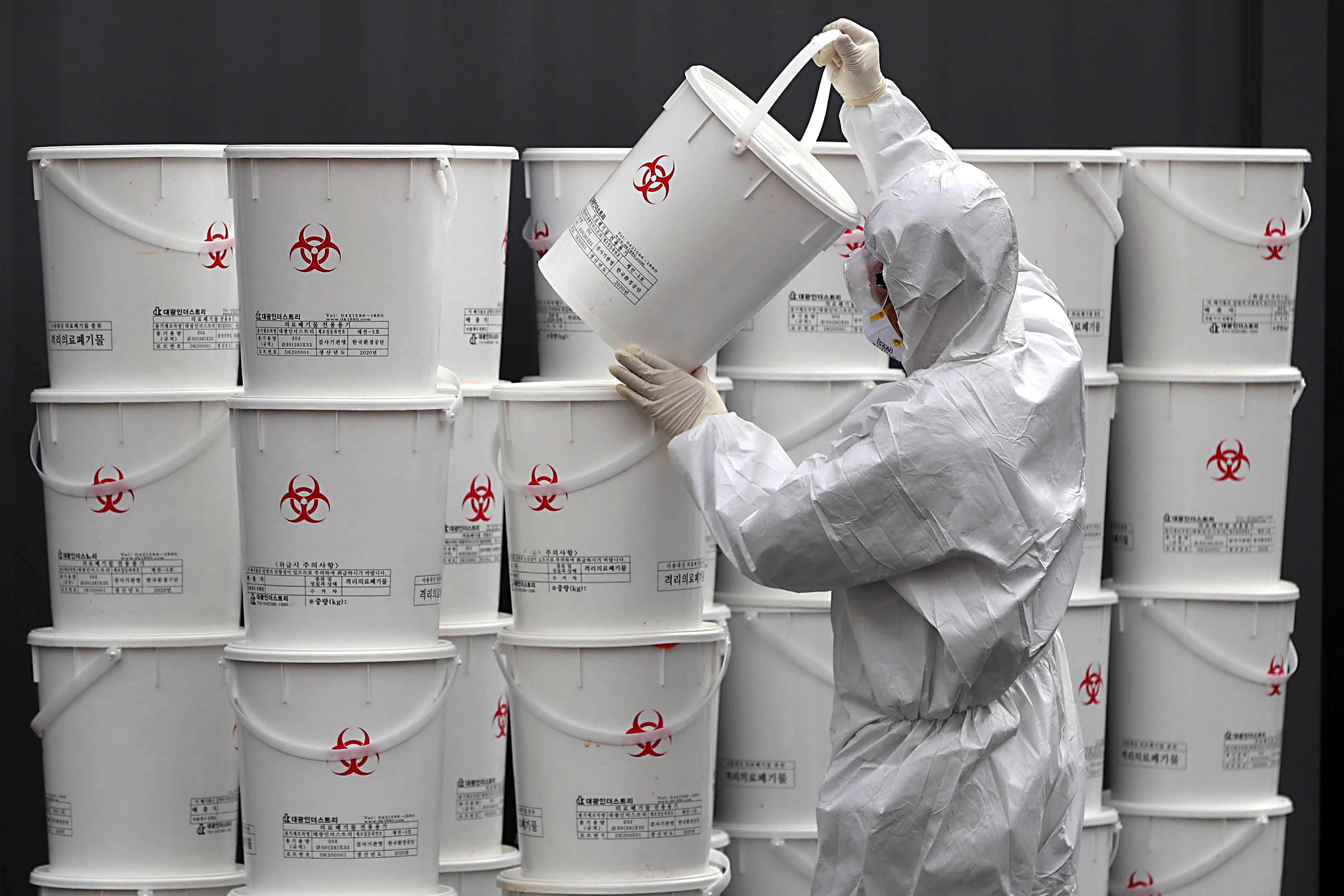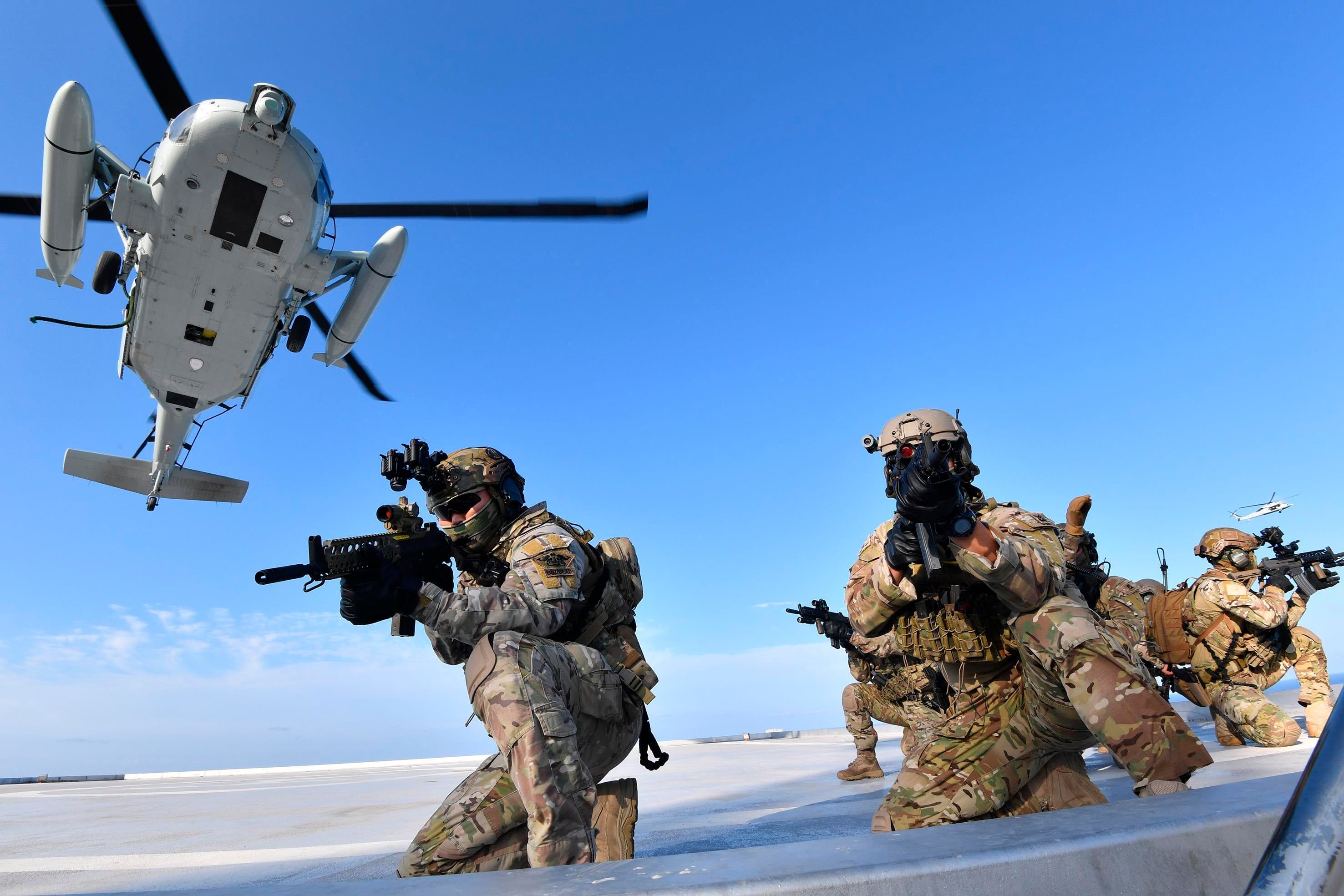WASHINGTON — Barring a last-minute diplomatic breakthrough, South Korean workers servicing American bases on the peninsula will be furloughed Wednesday — a move that may complicate further negotiations between the two nations over a defense funding agreement.
While the lines between Seoul and Washington remain open, no official negotiations are planned this week regarding the Special Measures Agreement, or SMA, which guides how much Seoul pays to cover the cost of American forces in South Korea.
That means 5,000 high-profile South Korean workers will start losing paychecks come April 1, which is likely to make the ongoing SMA negotiations even more difficult.
Speaking at an Atlantic Council dinner in February, Alexander Vershbow, who served as ambassador to South Korea from 2005-2008, expressed his concern that “our military relationship is at real risk now as President [Donald] Trump has taken an aggressively transactional approach” to dealing with the SMA.
The SMA was first signed in 1991 and is renegotiated every five years. The two sides could not come to an agreement in 2019, at which point Seoul was paying a little more than $920 million per year. The U.S. has been paying for workers out of reserve funds for the first quarter of 2020.
Overall, there have been seven rounds of SMA negotiations between the two countries, with the latest happening March 17 in Los Angeles, California. But the talks have made little real progress, according to sources familiar with the discussions. The U.S. stance remains that South Korea needs to increase its funding dramatically to make up for what Trump has called an unfair deal; South Korea’s position remains that it is willing to raise its funding, but not nearly to the level reportedly sought by Trump, which is a 400 percent increase over the temporary agreement currently in place.
Part of Seoul’s negotiating posture is that the nation is an amount of spending money on defense efforts that exceeds the bounds of the SMA. For instance, South Korea paid for roughly 90 percent of the $10.8 billion cost for setting up the U.S. Army’s Camp Humphreys, now the largest American military base overseas.
RELATED

South Korea believes its heavy investment in American-made military goods should be considered in the negotiations. From 2000-2018, South Korea contracted roughly $27 billion in foreign military sales from American firms, according to figures put out by the U.S. State Department in 2019. That includes high-end items like the F-35 Joint Strike Fighter, the Global Hawk UAV, KF-16 aircraft upgrades, Aegis combat systems, Patriot Advanced Capability-3 upgrades, Harpoon missiles and AH-64E attack helicopters.
In addition, since 2014 the U.S. has authorized the permanent export of more than $34 billion in defense articles to South Korea via direct commercial sales.
In a recent op-ed for Defense News, South Korean Defense Minister Jeong Kyeong-doo wrote that “besides the defense cost-sharing, the ROK government continues to expend approximately $7 billion per year for stable conditions for U.S. Forces Korea and a more powerful combined defense posture in the form of granted lands and buildings, provision of Korean Augmentation to the U.S. Army personnel, combined exercises and training, and defense-industrial cooperation.”
Vershbow noted that the U.S. ultimately has the upper hand in this particular negotiation, given the security guarantee provided by American forces against actions from North Korea.
“If the president is really trying to drive such a huge bargain, he may get his way. At the end of the day the Koreans can probably find the money,” he said. “But it’s going to have a tremendously damaging effect on public support in the alliance in Korea. It could be a pyrrhic victory for the U.S. if it forces a fairly one-sided compromise.”
RELATED
Tension between South Korea and Japan could hurt US goals in the Pacific — and China is watching
But the furlough notice means uncertainty in the SMA negotiations has increased, said Miyeon Oh, director of the Atlantic Council’s Asia Security Initiative — uncertainty that is likely to increase thanks to the new coronavirus outbreak.
“Although both the U.S. and South Korean teams are considering creative thinking and measures including virtual meetings to continue the stalled negotiations during the pandemic outbreak, the gap in negotiating positions is likely to remain for the time being,” Oh said, adding that “defense cost-sharing negotiations should not be an obstacle to close coordination and alliance readiness” when it comes to fighting the COVID-19 pandemic.
Further complicating matters is an upcoming election on April 15 to decide control of the South Korean National Assembly, where workers going unpaid could become a “domestically controversial” issue, Oh said.
South Korea President Moon Jae-in’s Democratic Party had appeared vulnerable at the start of the year, and the potential furloughing of workers was seen in some corners as an issue that could resonate as an embarrassment for his government at the polls. But Moon’s handling of the COVID-19 pandemic has boosted his numbers; polls conducted in the last week have him above a 50 percent approval rating, his best rating in months.
A win for the Democratic Party in South Korea may embolden Moon to hold fast against U.S. demands, but the particular personality makeup of the assembly will have final say over any SMA negotiated between the two governments.
Officials at Camp Humphreys have warned that a workforce furlough may lead to a delay in maintenance at its facilities, saying in a January Facebook post: “Due to the Special Measures Agreement lapse and implementation of [U.S.Forces Korea] austerity measures, including cessation of overtime pay for Korean National employees, USAG Humphreys will experience some delays to certain installation services, most notably post office hours and after-hours work performed by the Directorate of Public Works.”
Retired Army Col. David Maxwell, who has several decades of military service in Asia, told Military Times in February that furloughing South Korean employees would jeopardize readiness. For example, base services and military units would require service members to provide “borrowed military manpower” to conduct assignments that are “outside their normally assigned duties and units.”
Diana Stancy Correll with Military Times contributed to this report.
Aaron Mehta was deputy editor and senior Pentagon correspondent for Defense News, covering policy, strategy and acquisition at the highest levels of the Defense Department and its international partners.





